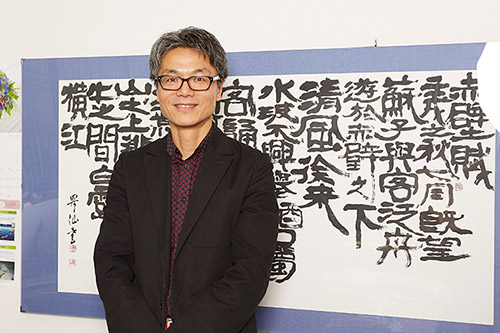Drilling through the continental crust existing beneath submarine volcanoes
However, how the magma produced in this way then forms continental crust still remains a mystery. Magmas formed in induction zones, including primary magmas, are almost all basaltic magmas. Most of the submarine volcanoes themselves are also made up of basalt. How on earth is andesite continental crust produced from basaltic magmas?
Some intriguing results were obtained from data on the subsurface structure of the IBM arc through observation of seismic waves. For some reason, beneath the basaltic submarine volcanoes, an andesite-like thick middle crust exists. Says Tamura, “It looks as if continental crust is formed, and rapidly grows, beneath the submarine volcanoes.” If that is the case, then that is 'newly formed continental crust'.
Project IBM, led by Tamura, will start in earnest this year. CHIKYU will recover samples from the middle crust in the IBM arc through deep ocean drilling for this project, which is set to shed light on the origin of continental crust. In an earlier phase of the project drilling will be performed by the JOIDES Resolution over the course of three expeditions this year. The objective is to clarify the historical transformations in this area by retrieving sediments etc. from the crust before the onset of subduction and the crust at the onset, up to the present. After that the aim is for the CHIKYU to drill through the middle crust 5.5 km below the submarine volcano.
Tamura wonders whether the andesite crust, which for some reason is formed beneath volcanoes in the island arc, rises to the surface because of the collision and then ultimately develops into crust when it accumulates. Getting hold of freshly formed continental crust will undoubtedly clarify that process.
Drilling at 5.5 km beneath the seafloor will be an unprecedented difficult challenge for the CHIKYU, although it is expected to reach the even deeper mantle in the future. If we can study matter from the mantle, we might be able to understand the total process of the earth's origin. “We therefore really want to succeed in reaching the middle crust for the first time, and directly harvest continental crust samples,” tells Tamura enthusiastically.


- |1|
- 2|
